Palo Alto continues to wrestle with questions about the amount of commercial and residential development in the City, as well as related issues like parking and transportation. One aspect that concerns me is traffic in the residential neighborhoods.
I live at the corner of Waverley Street and Lincoln Avenue a few blocks south of downtown Palo Alto, in the Professorville Historic District.
The original proposal for the historic area notes, somewhat ironically these days, that it "retains the serene atmosphere now sadly lacking in most of the remainder of downtown Palo Alto". Click here to see what it looks like at 8AM, at the time kids are walking and biking to school at Addison Elementary nearby. (This video is speeded-up for convenience; it shows about seven minutes of real time in 40 seconds. There are 74 cars and trucks, for a real-time average of one vehicle every 5.7 seconds.) Since I bought my property in 2007 the increase in noise, parking difficulty, and safety hazards is significant.
Back in 2013 I decided to make some measurements to see just how many cars and trucks were passing by. I was surprised to find that more than 4000 vehicles per day drove though the intersection by my house.
Here's a bar chart of the total traffic through the intersection, hour-by-hour (0 means midnight to 1AM, 3 means 3AM to 4AM, 12 means noon to 1PM, 15 means 3PM to 4PM, and so on).
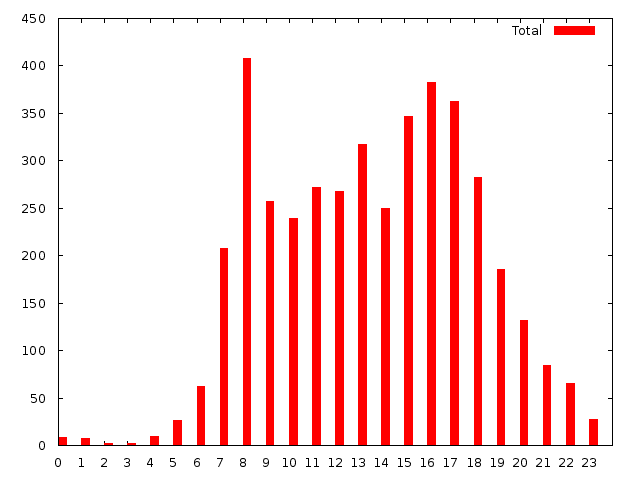
Here's the traffic entering from Lincoln Avenue:
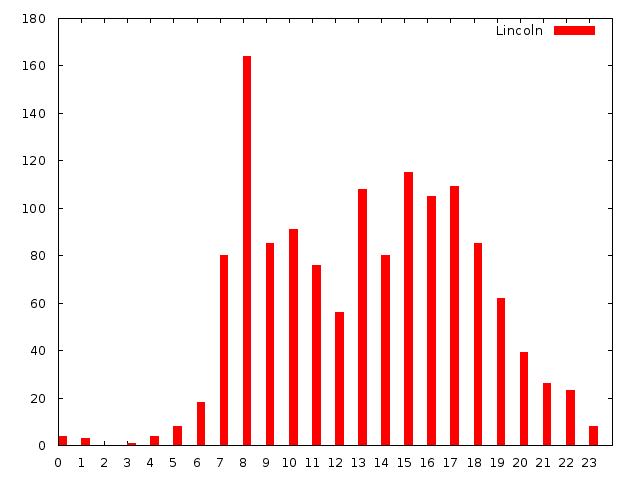
Here's the traffic entering from Waverley Street:
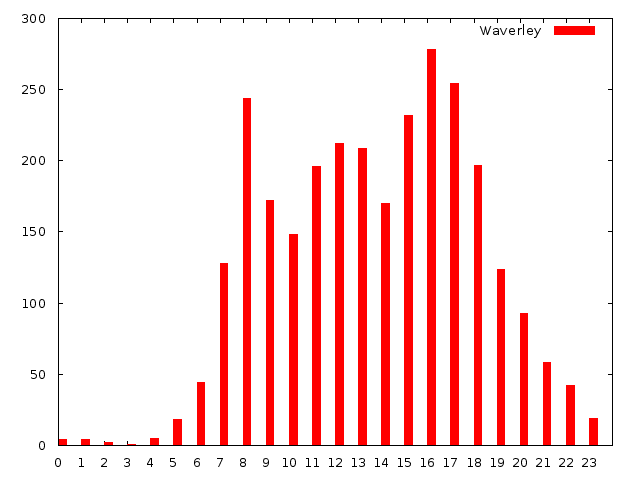
And to make things easier to compare, here are all three of the above charts combined into one:
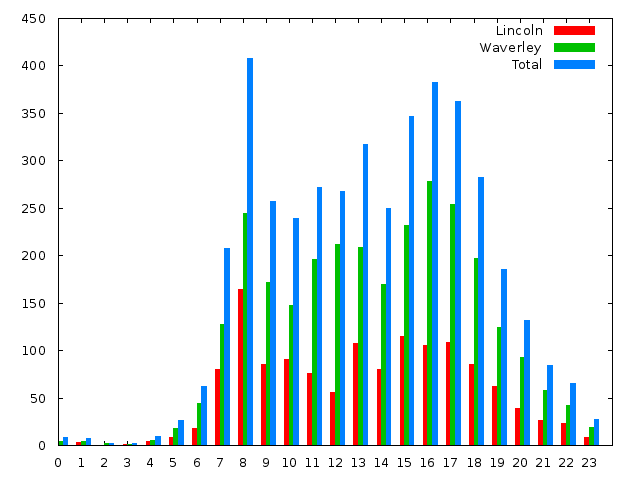
You can see that traffic on Waverley peaked during the morning commute, lunchtime, and evening commute. Traffic on Lincoln peaked a little differently, possibly because of school drop-off and pick-up. On average, about 4200 vehicles passed through the intersection each day. There are about 200 homes in the Professorville neighborhood; if each has two cars, each car makes one round trip per day, and every single trip goes by my house, that would account for only 800 vehicles. Obviously the vast majority of traffic here is not from residents.
Lincoln is classified as a normal residential street. At an average of 1300 vehicles per day, it was already above the volume (1200) required to qualify for the old Neighborhood Traffic Calming Program. Waverley is a "residential collector" street which is expected to carry more than that, but is still supposed to be restricted to residential traffic. At an average of 2900 vehicles per day, it was carrying roughly 3/4 of the volume (4000) at which traffic-calming measures could be considered under the old program.
In 2015 I measured traffic again. This time Lincoln carried an average of 1740 vehicles and Waverley 3400, for a total of about 5100 vehicles/day. This is an increase of about 30% on Lincoln and 20% on Waverley in just two years. Here are the bar charts:
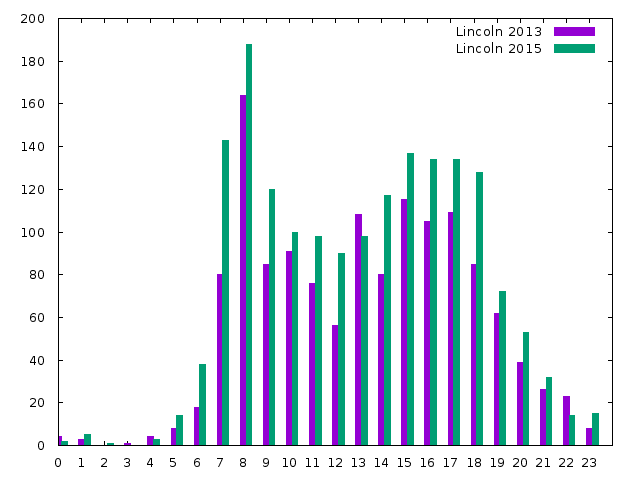
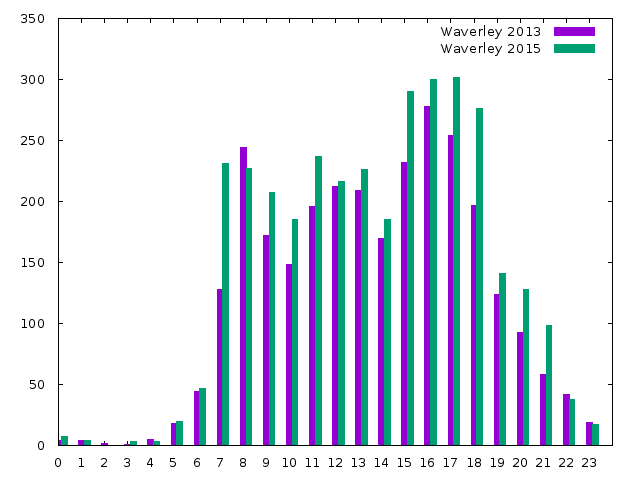
I don't have a meaningful measure of traffic in 2016 because of the City's sewer construction project in the area.
Despite many requests over the years, the City has never studied traffic throughout the neighborhoods. As a result, there is no general understanding of traffic flow in the downtown neighborhoods, and there is no baseline measurement that can be used to determine whether transportation demand management programs or traffic calming methods are effective.
Allen
This page can be found at http://arden.org/traffic/index.html . Last nontrivial update 2016-12-05 15:00